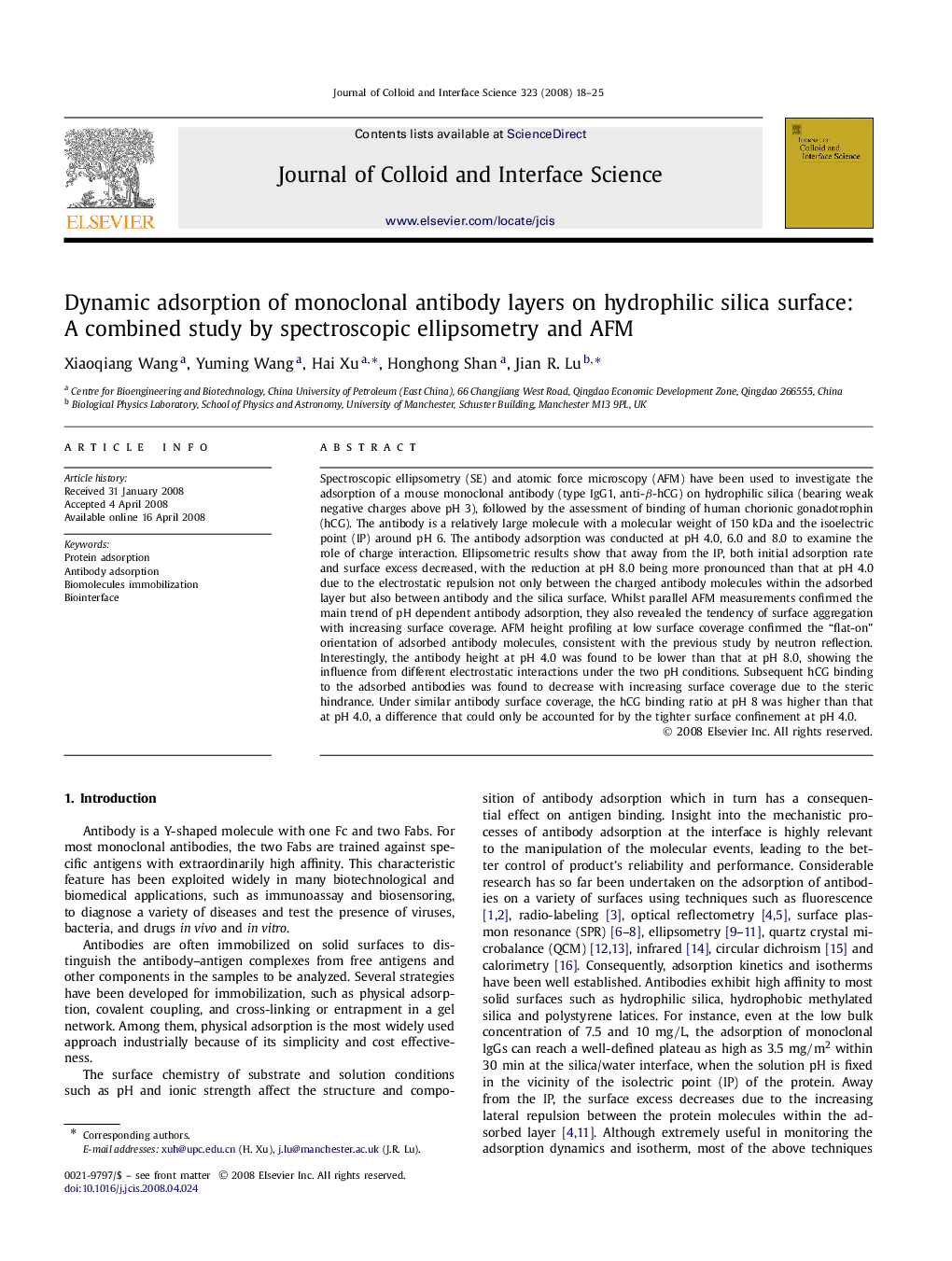| Article ID | Journal | Published Year | Pages | File Type |
|---|---|---|---|---|
| 611690 | Journal of Colloid and Interface Science | 2008 | 8 Pages |
Spectroscopic ellipsometry (SE) and atomic force microscopy (AFM) have been used to investigate the adsorption of a mouse monoclonal antibody (type IgG1, anti-β-hCG) on hydrophilic silica (bearing weak negative charges above pH 3), followed by the assessment of binding of human chorionic gonadotrophin (hCG). The antibody is a relatively large molecule with a molecular weight of 150 kDa and the isoelectric point (IP) around pH 6. The antibody adsorption was conducted at pH 4.0, 6.0 and 8.0 to examine the role of charge interaction. Ellipsometric results show that away from the IP, both initial adsorption rate and surface excess decreased, with the reduction at pH 8.0 being more pronounced than that at pH 4.0 due to the electrostatic repulsion not only between the charged antibody molecules within the adsorbed layer but also between antibody and the silica surface. Whilst parallel AFM measurements confirmed the main trend of pH dependent antibody adsorption, they also revealed the tendency of surface aggregation with increasing surface coverage. AFM height profiling at low surface coverage confirmed the “flat-on” orientation of adsorbed antibody molecules, consistent with the previous study by neutron reflection. Interestingly, the antibody height at pH 4.0 was found to be lower than that at pH 8.0, showing the influence from different electrostatic interactions under the two pH conditions. Subsequent hCG binding to the adsorbed antibodies was found to decrease with increasing surface coverage due to the steric hindrance. Under similar antibody surface coverage, the hCG binding ratio at pH 8 was higher than that at pH 4.0, a difference that could only be accounted for by the tighter surface confinement at pH 4.0.
Graphical abstractSpecific binding of antigen hCG to pre-adsorbed antibody anti-hCG (▵) compared to the control (○).Figure optionsDownload full-size imageDownload as PowerPoint slide
